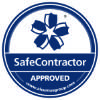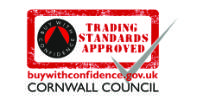Up to: < Monitoring
How Water Monitoring Prevents Legionella.
Temperature monitoring and water testing can highlight issues.

Favourable conditions for Legionella bacteria
The bacteria’s ideal temperature for growth is 37°C, so temperatures of between 20°C and 45°C should be avoided in water systems. The bacteria are killed instantly in temperatures in excess of 70°C or above.
The bacteria also require a food source to grow and can feed on corrosion, scale, sediment and algae. This is why it is so important to clean water systems regularly.
How and why water monitoring prevents Legionella bacteria growth…
Temperature monitoring
It is essential that temperatures for sentinel outlets and assets are taken monthly. Representative outlets should be tested on an annual basis. This enables continuous monitoring of the temperature control parameters; i.e. where temperatures are below 50°C for hot water services or exceed 20°C for cold water systems, as outlined in HSG 274, part 2.
A calibrated thermometer should be used to complete the testing and the data logged. The results may show that the water system’s temperature is out of tolerance. If this is the case the temperature of the water will need to be adjusted to prevent Legionella bacteria from growing.
Software for logging the results is often supplied by specialist consultancies. Good packages will highlight any non-compliant results.
If needed, partnering consultancies can manage and conduct the testing for you.
Water sampling and testing
Water sampling can ensure that your water systems do not support and encourage the proliferation of Legionella.
Once collected, the samples should be sent to a UKAS accredited laboratory for testing. The laboratory will assess if bacteria grows on agar plates. Then they will count the colony forming units that have grown after a specified time. If the count is too high, immediate action will be required to prevent any infection. Types of action could include disinfection, for example.
The ACoP L8 recommends it is good practice to collect water samples for microbiological analysis on a 6 monthly basis if:
- There is doubt about the efficiency of the control regime.
- It is known that recommended temperatures, disinfectant concentrations or other precautions are not being consistently achieved.
Your Legionella risk assessment will recommend a suitable, site specific monitoring regime. This will be appropriate to your property and risk factors.
Why does Legionella bacteria growth need to be managed?
Legionella is a bacterial micro-organism found in water and water systems. It can cause two illnesses:
- Legionnaires disease, which is like pneumonia.
- Pontiac fever, which is like flu.
These illnesses together are known as Legionellosis. There are roughly between 200 - 400 cases per year reported in the U.K., with around 12% resulting in death.
Who is most at risk?
You are more at risk from contracting the disease if you are over 45, a heavy smoker, a heavy drinker and take no exercise. Those who suffer from other respiratory illnesses or have a weak immune system are also at a higher risk. Along with cancer sufferers, those with diabetes, kidney complaints and heart disease.
Incubation periods and symptoms
The incubation period can be between 2-19 days but are normally 6-7 days. Symptoms are similar to that of pneumonia and flu. If you are diagnosed with Legionnaires disease you may need hospital treatment. This may include intravenous antibiotics and oxygen to help you breathe. A course of antibiotics may also be necessary once you return home.
How do you catch Legionellosis?
You can catch it from things like air conditioning systems, spa pools and hot tubs, showers, taps and toilets. To become infected you need to breathe in tiny droplets (aerosols). These droplets need to contain Legionella bacteria. It is unusual to contract the disease through drinking water, other people with the infection or places like lakes and rivers.



